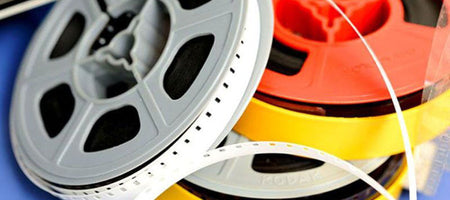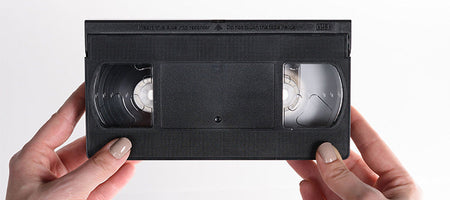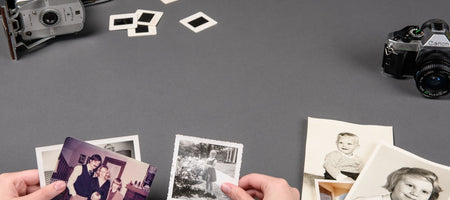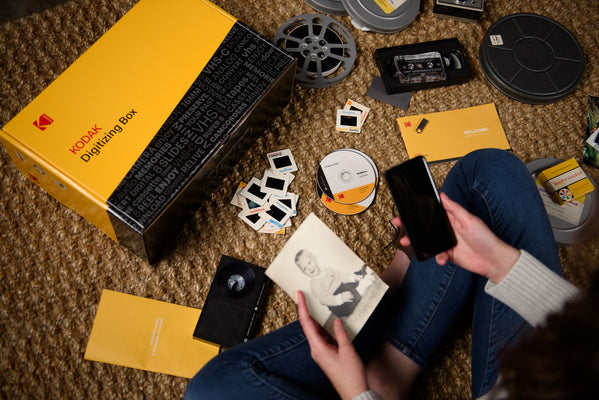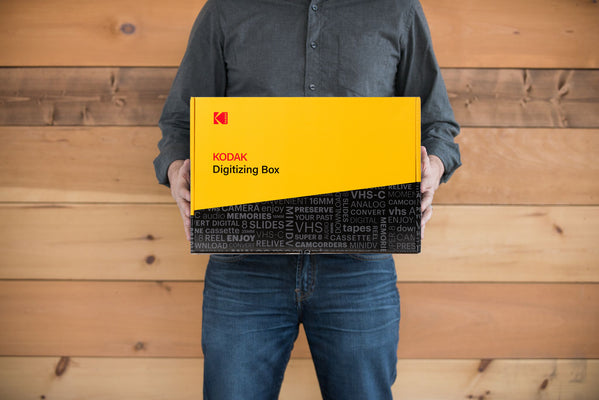If you have a cornucopia of negative strips sitting around doing nothing, there’s a decent chance that you’ve wondered what you can do with them. They’re just sitting there, after all, probably acquiescing to the slow decay of time. “I’d rather they didn’t slowly fade into oblivion,” you might be thinking to yourself. That’s good!
You should definitely do something to preserve and back up the images contained on those sepia frames.In thinking through how exactly you might like to preserve your negatives, the idea of digitization might have also skittered across your mind. Digitization is a wonderful way to preserve your memories for posterity and pick up a few Facebook likes along the way.
But how should you go about it?
You actually have a couple of options. The first one involves a bunch of work, and the second one is easy peasy.
If you hop onto Amazon, you can do a quick search for “Negative Scanner.” A few different brands manufacture little machines that scan your negatives into digital versions for you to upload onto your computer. But do they actually work? Well, technically, my cheapo printer works, but the pages come out with yellow stripes and the black ink runs out after about three lines of text. Does it work? Kind of. Do negative scanners actually work, or do they Christian’s “printer” work? We’re going to have to dig deeper.
Off to Amazon!
Scanner 1: Scanner number one is manufactured by a brand that I’ve never heard of in my life. That’s not uncommon on Amazon. It costs a reasonably affordable $79.99. I can’t quite get a read on how it works, but it looks like this device requires an extra SD card to store the scanned images. That means you would have to scan your negatives onto a memory card, plug the memory card into your computer, and drag the files into whatever folders you want. Seems like a bunch of work. The 3.8 star ranking doesn’t instill confidence, and this particular snippet of a review, “The quality (‘even’ at 22MP) is so poor, I don’t understand this product,” doesn’t exactly fill me with confidence.
Scanner 2: Coming in at a less affordable $159.99, this scanner is supposed to be a premium device to scan your negatives. This bad boy also requires an SD card to save your scanned images, and 4.1 star ranking feels a bit more promising. After a bit of sifting, the reviews state that the image quality is pretty good, but the manual process of scanning the slides can apparently be quite the undertaking. This scanner is the perfect example of a product that works, but maybe it’s not quite as easy as we’d like it to be.
Scanner 3: This last scanner has the Goldilocks price between scanner 1 and 2, coming in at $117.61. It looks like more of a traditional scanner with an extra feature that accommodates slides. Looking at the instructions, it looks a bit tedious to load the scanner, and it also looks pretty slow. The good news about this scanner is that it doesn’t require an SD card for saving your pictures, but it doesn’t have a convenient loading mechanism. According to the reviews, the software included with the scanner is pretty bad, and the quality isn’t great.
So do those scanners work? I guess. They do a job. I’m not sure that I can confidently say that they do the job, but they do something.
Option 1 is to purchase a piece of equipment that probably will cause frustration and leave some quality to be desired. It also involves a bunch of work. There’s great news though! We still get to talk about option 2!
Option 2 is simple! All you do is ship your negatives to KODAK Digitizing and let us digitize them for you. You mail us your slides, we’ll scan them with our expensive, professional equipment, and send everything back to you with a convenient Thumb Drive, DVD set, or Digital Download with all of your new digital files. So simple!

